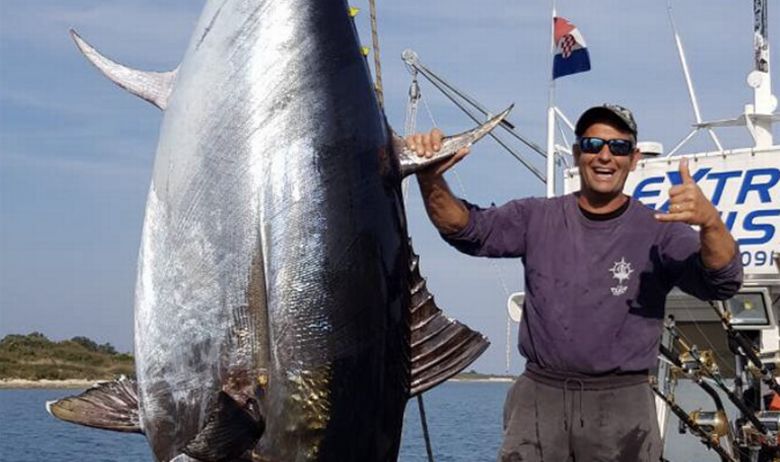

Their bodies are sleek and shaped like torpedoes, designed for speed and endurance.Īs is the case with the majority of bony fishes that live in open oceans, Atlantic bluefin tuna begin their lives as incredibly small larvae that are no more than a few millimeters long and weigh no more than a few hundredths of a gram. One of the fishes found all over the globe, the Atlantic bluefin tuna is notable for being one of the biggest, the quickest, and the most brilliantly colored. The Atlantic bluefin is the largest tuna species in the world. Between the islands of Japan and the Philippines in the Western Pacific Ocean, they have their spawning grounds between April and August.Ĭonservation Status: Threatened in Europe, Least Concerned elsewhere It is generally accepted that the Pacific bluefin tuna is a highly migratory species. Scientists have shown that this additional warmth promotes metabolic rates that are more effective, which in turn directly correlates to the tuna’s ability to swim quickly and powerfully. In contrast to most other fish species, the bluefin tuna’s internal temperature may sometimes exceed the water it is swimming in. This extremely migratory fish may travel thousands of kilometers in a stretch, crossing the Pacific Ocean in as little as fifty-five days to reach its breeding grounds.ĭuring their migrations, bluefin tuna are known to swim across frosty northern seas and dive to depths of up to 1800 feet (550 meters) when the water temperature is below freezing. The Pacific bluefin tuna is a strong swimmer with a body designed for endurance and speed.

The lifespan of the huge pelagic species known as the southern bluefin tuna is estimated to be between 20 and 40 years. They are denoted by dots of a corresponding color arranged in rows, in addition to colorless transverse lines. When adults, this portion of their caudal keel is yellow. Their first dorsal fin may be yellow or blue, depending on the species, and their anal fin and finlets have a dingy yellow base with a black edging. These fish have swim bladders, and the underside of their bodies (known as the ventral side) has a silvery white tint. If a southern bluefin tuna is allowed to mature for around 12 years before it is captured, it can reach a length of 2.45 meters and a weight of up to 260 kilograms. The southern bluefin tuna, scientifically known as Thunnus maccoyii, is a very big fish that is often collected by commercial long-liners from Indonesia and Japan in the Indian Ocean, which serves as their breeding habitat. Now, here are the 8 largest tuna species in the world. These tuna species are wonderful, whether eaten or valued for their ecological importance. They’re hard to capture yet vital to the ocean’s ecology. The biggest tuna species are praised for their size, taste, and nutrition. In addition, tuna help balance maritime ecosystems by controlling smaller fish and squid populations. It’s also crucial to the ocean’s environment since sharks and billfish eat it. Tuna is significant for more than size and taste. Sport fishermen also like catching large tuna. However, millions of tons of tuna are fished annually.Ĭommercial fisheries target the biggest tuna species. They swim fast, making them one of the world’s most evasive fish. Tuna migrate millions of kilometers across the ocean. Their delicious flesh and high omega-3 fatty acid content make them popular. Without naming it, we’ll examine the world’s biggest tuna species in this article.įast-swimming tuna may get large. Some tuna species are bigger and more valuable. Many cuisines use tuna because of its taste and nutrients.


 0 kommentar(er)
0 kommentar(er)
